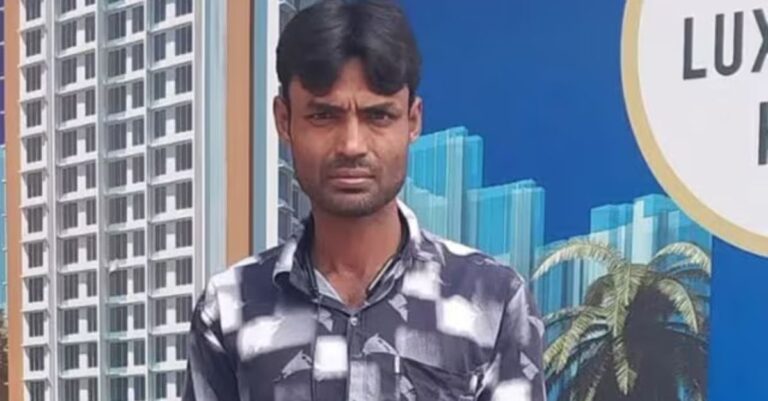Introduction: In State and Minorities (1947), Dr. B.R. Ambedkar proposed safeguards to protect the rights of minorities at a time when our nation was just born. A nation, he opined, was more than a shared history, language, or culture—it was a collective sense of unity. Ambedkar warned that the majority communalism often disguises itself as nationalism. Unfortunately, his fears have largely come true. Today, we witness growing violence against Dalits, Adivasis, Christians, Sikhs, and women. This essay explores the role of waqf—charitable endowments made by Muslims in India—within the broader framework of minority rights. I argue that empowering minorities is essential for realizing India’s vision as a pluralistic society free from discrimination and exclusion.
Discrimination against Muslims: Mushirul Hasan (Images of India’s Muslims, 2008) notes that anti-Muslim sentiments began taking root during colonial rule. Unfortunately, there are not many studies in this regard. However, there are some good researches on discrimination after Independence. For example, Muslims (and Dalits) face discrimination in private-sector jobs and the rental housing market (Sukhadeo Thorat et al., 2007, 2015). Many urban slums are predominantly occupied by these communities. Minorities (Muslims, Dalits, and Adivasis) are overrepresented in jails (Zakaria Siddique and Irfan Ahmad, 2017). Zoya Hasan (Politics of Inclusion, 2009) highlights that Muslims (and other religious minorities) are denied affirmative action policies even symbolically. Another factor behind the economic backwardness of Muslims is the communal violence. Irfan Ahmad (2020) prefers the term ‘pogroms’. Over time, we see that discrimination has deteriorated Muslims from being marginalized to being excluded (Ali Khan Mahmudabad, 2020). Nevertheless, Muslims are asserting their rights and creating their own media platforms supporting social justice (Md. Reyaz, 2021).
Socio-economic status of Muslims: The discrimination faced by minorities directly impacts their socio-economic status. Muslims, Dalits, and Adivasis are among the poorest communities in India (Sukhadeo Thorat et al., 2018). Among religious minorities, Muslims and Buddhists are poorest (Thorat and Ahmad, 2015). Muslim women, in particular, experience double discrimination— both as women and as Muslims (Ghazala Jamil, Muslim Women Speak, 2018). The Sachar Committee report (2006) revealed that Muslims lag behind in key areas such as education, housing, healthcare, access to public services, and employment almost similar to Dalits and Adivasis. Paradoxically, proponents of subaltern Hindutva claim that Muslims are India’s most privileged minority!
Lived Islam in India: Historians and sociologists have shown that pluralism and inclusion have been integral to the practice of Islam in India for centuries. Mushirul Hasan’s Qasbas in Colonial Awadh (2004) and Imtiaz Ahmad’s Ritual and Religion among Muslims in India (1981) are worth mentioning here. The role of Sufism in fostering communal harmony has been explored by Richard Eaton (The Rise of Islam and the Bengal Frontier, 1993), Mohammad Mujeeb (The Indian Muslims, 1967) and M.N. Roy (The Historical Role of Islam, 1937). Periyar held Islam in high regard (G. Aloysius, Periyar on Islam, 2004). Likewise, Jyotirao Phule respected Prophet Muhammad (Gail Omvedt, 2011). Gail Minault (1984) has shown that Islam in India is dynamic and adaptable to social change. One can watch the film Fragrance of Love (1998) by Muzaffar Ali to visually observe the beautifully portrayal of the spirit of harmony and coexistence.
Waqf in India: The Prophet of Islam decreed that the pious man gives his wealth to orphans, the poor and the wayfarers (Mushirul Hasan, Muslim Intellectuals in 19th century Delhi, 2005). In Islam, dedicating of one’s wealth for charitable purposes is known as waqf. The primary objective of waqf is public welfare like feeding the poor, supporting individuals with disabilities, widows, those seeking support for marriage or post-divorce expenses, female scholars, female entrepreneurs, funding educational institutions like schools and libraries, promoting healthcare, famine relief, providing relief efforts, and maintaining community facilities such as mosques, dargahs, and graveyards. It also includes or included earlier— veterinary services, animal fountains, inns along travel routes, freeing the slaves, public bath houses, orphanages, and maintaining ribats (shelters exclusively for Muslim women).
Historically, there have been many examples of land donated as waqf. One notable instance is Mukhayriq, a Jewish ally of Prophet Muhammad, who donated a garden as waqf. One of the world’s oldest universities—the Qarawiyyin Mosque and Madrasa College in Morocco—was established as a waqf property by a Muslim woman named Fatima al-Fihri in 859 AD. Her sister, Maryam al-Fihri, founded the Al-Andalus Mosque. Contributions to waqf were not limited to Muslims. In many Muslim-majority regions (Morocco, Jerusalem, Lebanon, the Balkans, Istanbul, and Cairo) significant waqf donations were made by Jews and Christians (Khalil Abdur Rashid, Financing Kindness as a Society, 2021).
Today, the government is claiming that it aims to improve waqf management. However, most people question the government’s intentions, as little attention is given to the widespread encroachment of waqf properties by illegal occupants, corporate and even governments (Omar Kahlidi, Muslims in Indian Economy, 2006). Most intellectuals argue that if the government is serious about managing waqf properties, it must first implement the recommendations of the Sachar Committee. Like, one needs to have civil servants specially recruited to serve waqf, having basic knowledge of Urdu, Persian and Islamicate culture. Rajya Sabha member Syed Naseer Hussain wants the government to increase investments in waqf (Frontline, Nov. 2024). In West Bengal, minority rights expert Sabir Ahmad highlights that waqf properties are actively used to support the destitute.
Conclusion: Muslims in India, like other marginalized communities such as Dalits, Adivasis, and Buddhists, face socio-economic vulnerabilities and systemic discrimination. To address these challenges, they require comprehensive legal, cultural, political and economic safeguards. Perhaps Dr. Ambedkar foresaw this reality, as reflected in his essay Communal Deadlock and a Way to Solve It (1945). Viewed from this perspective, the issue of waqf takes on greater significance in today’s world. This article illustrates that waqf is more than an Islamic tradition— it is a universal model of compassion and social welfare.




